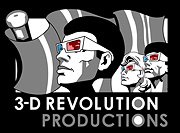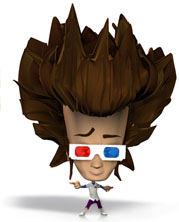A little bit of Stereoscopic 3D perspective

Toy Story 3-D: Something Pixar promised not to do
Toy Story 3-D. Pixar has said in the past that they could not see any reason to release their films in 3-D. When asked personally in 2007, Monsters Inc.'s Peter Docter was clear on the subject by stating: "We have looked at 3-D in the past and have come to the conclusion that there is little to no way in which 3-D can indeed enhance the quality of our storytelling or enhance the character interaction in a meaningful way". And as we all know Pixar is all about stories and character interaction. Lo and behold, Disney purchases Pixar and suddenly the news comes out in 2008: all Pixar movies will, from now on, be released in 3-D. Not only that, but Toy Story 1 and 2 will be re-released in 3-D as well, leading up to the 3-D release of Toy Story 3. So who or what is behind this sudden change of mind? Disney marketing? Why else does the animation studio with the most integrity in the industry change its mind overnight about 3-D, going against their own, strong beliefs about Stereoscopic 3-D film? In PR releases the reason mentioned is digital 3-D projection because, in some people's minds, projection equals story.
U2 3-D - anaglyph still not representative of the actual Real-D experience.
Don't worry. Fun to see an actual 3-D PR still, though, no?
Jon Shapiro, producer of U23D:
"3-D has been a gimmick in the past that has been used to fend of radio and then television, but now with digital technology we can shoot perfect 3-D to the pixel."
So how does shooting digital not make 3-D a gimmick, exactly? Because now you are shooting out-of-screen effects with digital cameras? What a strange argument... 'Spy Kids', 'Sharkboy & Lavagirl' and 'Ghosts of the Abyss' are, with all due respect, the living proof of why HD filming does not necessarily equal good 3-D. And why would it? HD is a recording format, not an artistic quality assurance. In fact, shooting HD with it's real-time playback ability appears to hurt a good 3-D end result as directors don't need to visualize shots in their head any more, but tinker and tweak on the spot. A shoot on a Monday morning will thus result in different 3-D camera parameters than one done on a Friday afternoon - as the crew will have different visual tolerances on the different days.
James Cameron switches back to a beamsplitter camera setup
after promoting the Fusion 3-D side-by-side camera for years and years
James Cameron:
"Even in its crude form when it (3-D) first debuted in 1951, 3-D cinema demonstrated the power to captivate audiences. However, inadequacies in camera and projector technology resulted in eyestrain and other viewing hardships that quickly killed the medium."
Cameron's 3-D response to those 'inadequate' 3-D movies? Shoot a 3-D film with 1080p cameras, with an interocular of 70mm and converge on subjects 1m away from the camera, while being underwater with deep, deep scenes, with dirt floating at 1mm distance in front of the lens. Then blow this material up to IMAX size and call it the future of 3-D. You mentioned eyestrain and viewing hardship? It's not the recording method that matters, it's using the medium to shoot pleasant 3-D and tell interesting stories. Why is the argument of gripping narrative and cinematic quality confused with projection quality? Because that's one of the very few elements that has changed dramatically over 55 years since Hollywood gave us 'Creature from the Black Lagoon' and 'Radar Men from the Moon' in 3-D.
Convergence, as used in the Fusion 3-D camera rig, is bad for 3-D
So are we seeing a real 3-D revolution? And are there other reasons for the historic failure of 3-D rather than just misaligned projectors? Time for a little reality check:
3-D Stereoscopic Film releases over the years from 1920 to 2010
The real 3-D revolution happened in 1953. There are no two ways about it. The camera and projection systems may now be called ‘inadequate’, but Hollywood had switched over to 3-D in a very real way. The amount of 3-D film released in 1953 and ’54 was not only larger in absolute umber by a factor of 10, compared to the amount of ‘regular’ 2-D films released in ‘53 and ’54, the percentage of 3-D films released and to be released in 2008 is also 10x less than the percentage in ’53 – ’54. So what is going on here? Is it a good old American cover-up of historical facts to the benefit of promotion of new technologies and new product? It is impossible to compare 1950’s 3-D movies to stereoscopic films of today because both eras produce(d) very different cinematic end products. 'The Creature from the Black Lagoon' may not make you scream in terror today, but back in 1953 it was pretty darn impressive stuff. So how can you call those 3-D films ‘cheap’, ‘naff’ or ‘inadequate’? As said, it is the cinematographic use of 3-D that should dictate the judgement of the stereoscopic entertainment, and if you do insist on focussing on the storylines and rubber suits, take a very close second look at today’s 3-D releases because what exactly are the stories being told in 3-D today? Exactly: horror, fantasy and spectacle films. It’s still a big House of Wax here!
House of Wax - still amazing 3-D




